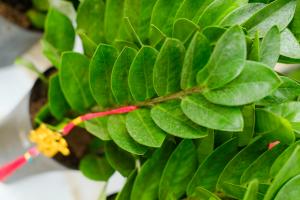Introduction
Aquatic plants play an essential role in an aquarium. They help to oxygenate the water, absorb excess nutrients, provide shelter and hiding spots for fish, and create a visually appealing environment. Potting aquatic plants is an effective way to keep them contained, grow them correctly, and prevent them from floating away. In this article, we will discuss how to pot aquatic plants in an aquarium.
Choose the Right Potting Material
The first step in potting aquatic plants is to choose the correct potting material. Ideally, you want a substrate that is dense enough to anchor the plant's roots, porous enough to allow for good water flow, and free from toxic substances. Some popular options include clay-based soils, sand, gravel, and even peat moss. Ensure that the potting material is thoroughly washed and sterilized to remove any unwanted debris or bacteria, which could harm your plants.
Choosing the Right Species of Aquatic Plants
Before potting the aquatic plants, you need to choose the right species for your aquarium. Select plants that are compatible with the water hardness, pH, temperature, and lighting conditions of your tank. Additionally, choose plants that complement each other and don't overcrowd the aquarium. Some suitable varieties include anubias, java ferns, cryptocorynes, and amazon swords. Ensure that you purchase plants that are healthy and free from disease or algae.
The Potting Process
Once you have selected the right aquatic plant species and potting material, the potting process can begin. Here are the steps to pot aquatic plants in an aquarium:
Step 1: Clean the pot thoroughly with warm, soapy water.
Step 2: Fill the pot with the potting substrate, leaving enough room for the plant's roots.
Step 3: Place the plant's root system carefully in the pot, ensuring that the roots are adequately covered with the substrate.
Step 4: Gently press down on the substrate to ensure that the plant is securely anchored.
Step 5: Add a layer of top dressing such as gravel or sand, to help keep the plant steady.
Step 6: Carefully lower the plant into the aquarium and place it in a suitable location. Don't overcrowd the aquarium, and ensure there is enough space and nutrients for other plants and fish.
Plant Maintenance
After potting the aquatic plants, you need to maintain them properly. Here are some essential factors to consider:
Lighting: Ensure that the plants receive adequate lighting based on their species requirements.
Fertilization: Use a fertilizer appropriate for aquatic plants and follow the recommended dosages.
Pruning: Regularly prune the plants to remove any dead or discoloured leaves.
Water Changes: Perform regular water changes to maintain water quality and remove excess nutrients.
Algae Control: Algae growth is natural, but it can harm your plants. Control algae growth by maintaining optimal water conditions, reducing light exposure, and using algae-killing products as required.
Conclusion
Potting aquatic plants is a process that requires patience, care, and attention to detail. The potting material must be suitable, the plants should be compatible with the water conditions, and the potting process must be followed accurately. Proper plant maintenance is also essential to ensure beautiful and healthy aquatic plants. Follow these steps, and you will have a beautiful and balanced aquatic environment.

 how many times do yo...
how many times do yo... how many planted tre...
how many planted tre... how many pine trees ...
how many pine trees ... how many pecan trees...
how many pecan trees... how many plants comp...
how many plants comp... how many plants can ...
how many plants can ... how many plants and ...
how many plants and ... how many pepper plan...
how many pepper plan...






























